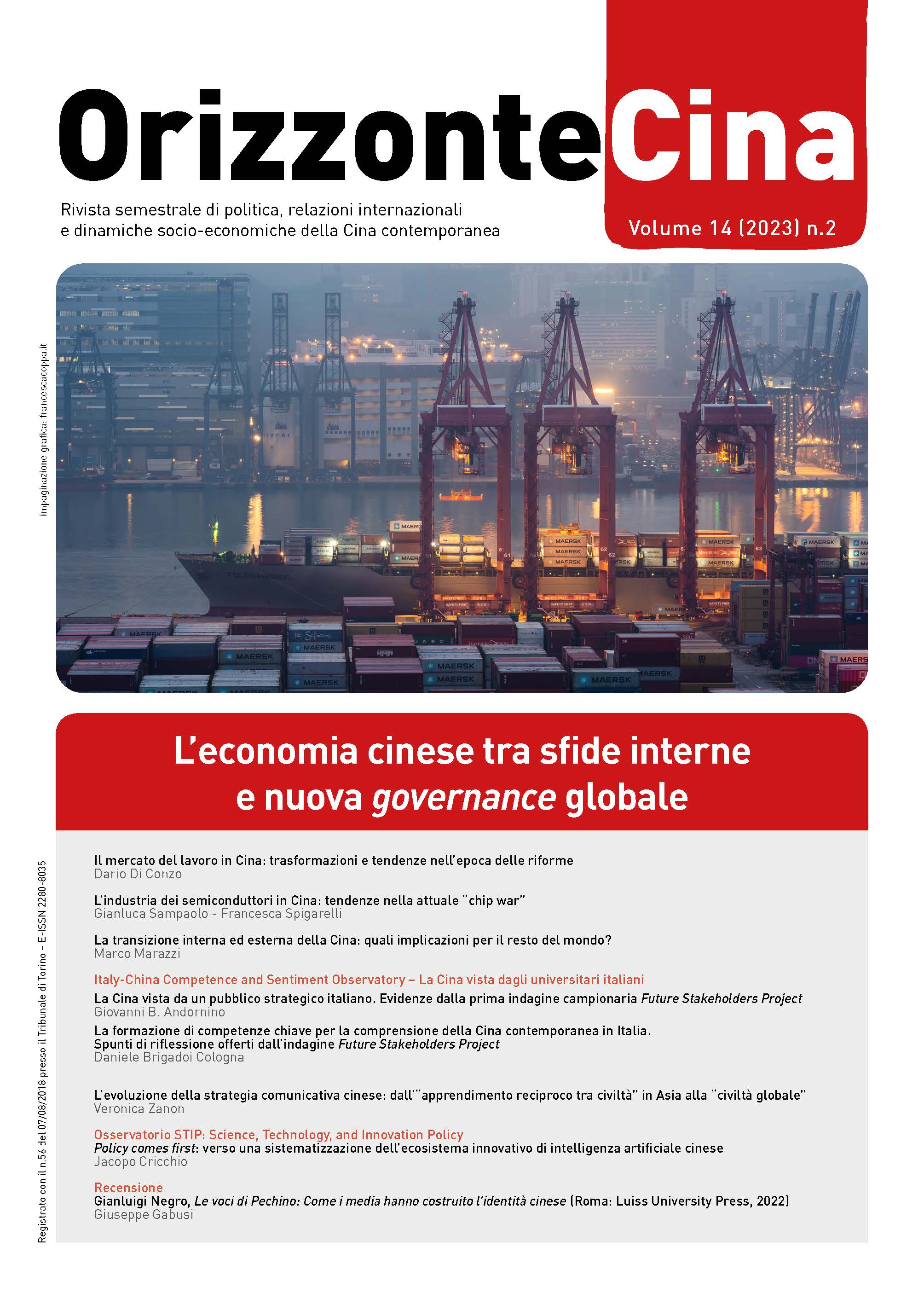Il mercato del lavoro in Cina: trasformazioni e tendenze nell’epoca delle riforme
DOI:
https://doi.org/10.13135/2280-8035/8328Abstract
Even though China is no longer the most populous country in the world, its labour market remains the largest. In 2022, with an economically active population of 780 million people, China accounted to 22.7% of the global labour force. Social scientists from multiple disciplines and approaches have largely investigated the role and evolution of the labour market within China’s staggering economic rise. However, the transformations that have taken place in the aftermath of the GFC have been even more profound and rapid than those in the previous 30 years of reforms, entailing a reallocation of labour that is unprecedented in history. Through data delivered by the National Bureau of Statistics of China (NBSC), this article focuses on the main shifts that occurred in the Chinese labour market in the reform-era, lingering on three main issues. Firstly, the demographic, spatial and macro-sectoral employment drivers which contributed to constitute the comparative advantage in labour cost in the first three decades of reforms. Secondly, the role performed by the urban-rural divide in shaping domestic migrant workers flows and their employment. Finally, the employment trends occurred within the firms’ property regime which resulted in a progressive “privatization” of labour.




